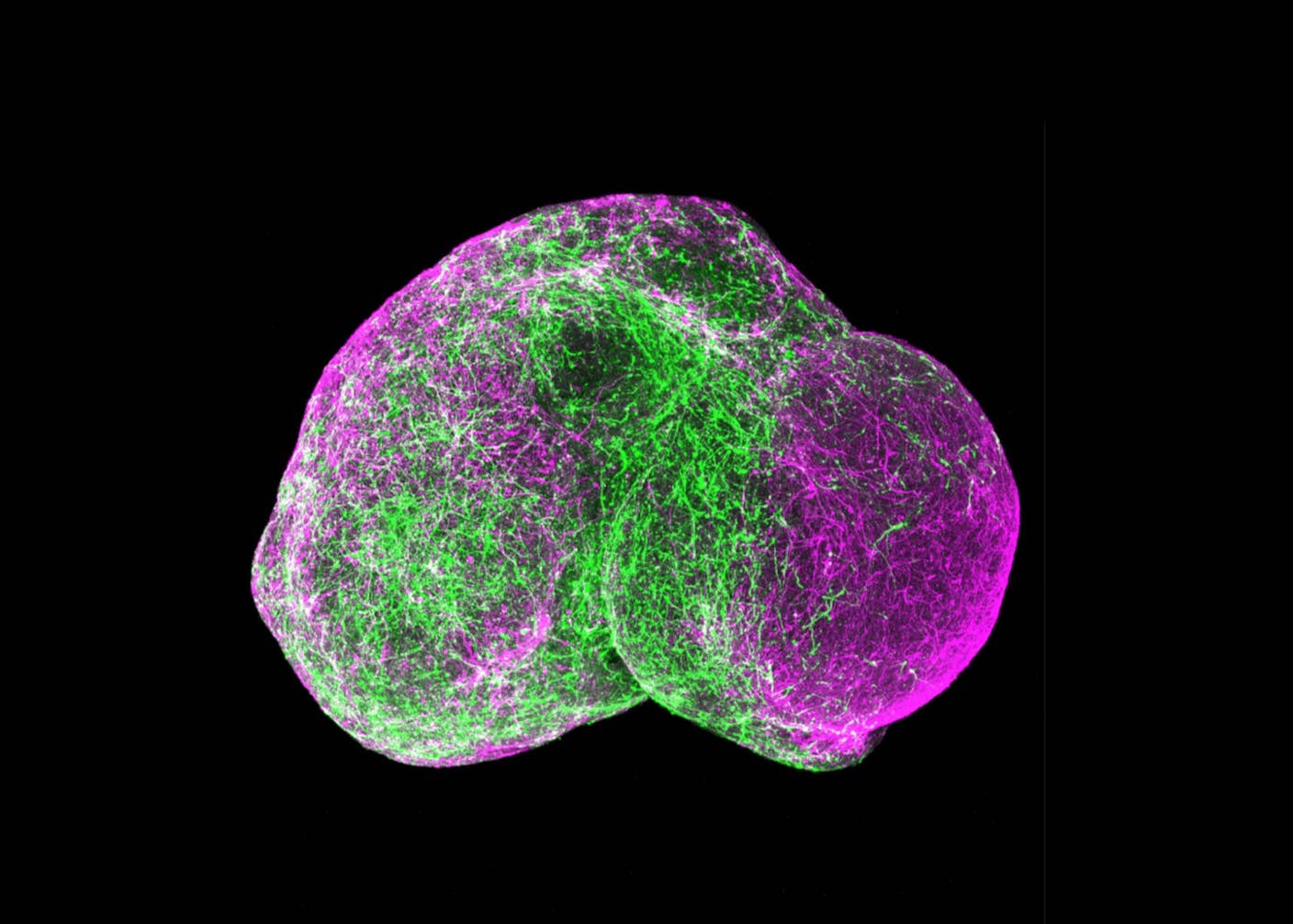Newly Discovered Spirals of Brain Activity May Help Explain Cognition

Share
Recently I perched on the edge of a cliff at Ausable Chasm, staring at the whitewater over 100 feet below. Water rushed through sandstone cliffs before hitting a natural break and twirling back onto itself, forming multiple hypnotic swirls. Over millennia, these waters have carved the magnificent stone walls lining the chasm, supporting a vibrant ecosystem.
The brain may do the same for cognition.
We know that different brain regions constantly coordinate their activity patterns, resulting in waves that ripple across the brain. Different types of waves correspond to differing mental and cognitive states.
That’s one idea for how the brain organizes itself to support our thoughts, feelings, and emotions. But if the brain’s information processing dynamics are like waves, what happens when there’s turbulence?
In fact, the brain does experience the equivalent of neural “hurricanes.” They bump into one another, and when they do, the resulting computations correlate with cognition.
These findings come from a unique study in Nature Human Behavior that bridges neuroscience and fluid dynamics to unpack the inner workings of the human mind.

Multiple interacting spirals organize the flow of brain activity. Image Credit: Gong et al.
The team analyzed 100 brain scans collected from the Human Connectome Project using methods usually reserved for observing water flow patterns in physics. The unconventional marriage of fields paid off: they found a mysterious, spiraling wave activity pattern in the brain while at rest and during challenging mental tasks.
The brain spirals often grew from select regions that bridge adjacent local neural networks. Eventually, they propagate across the cortex—the wrinkly, outermost region of the brain.
Often called the “seat of intelligence,” the cortex is a multitasker. Dedicated regions process our senses. Others interweave new experiences with memories and emotions, and in turn, form the decisions that help us adapt to an ever-changing world.
For the cortex to properly function, communication between each region is key. In a series of tests, brain spirals seem to be the messenger, organizing local neural networks across the cortex into a coherent computing processor. They’re also dedicated to a particular cognitive task. For example, when someone was listening to a story—as compared to solving math problems—the vortices began in different brain regions and created their own spin patterns, a cognitive fingerprint of sorts.
By analyzing these spiral wave fingerprints, the team found they could classify different stages of cognitive processing using brain images alone.
Finding turbulence in the brain is another step towards understanding how our biological computer works and could inspire the creation of future brain-based machines.
“By unraveling the mysteries of brain activity and uncovering the mechanisms governing its coordination, we are moving closer to unlocking the full potential of understanding cognition and brain function,” said study author Dr. Pulin Gong at the University of Sydney.
Won’t You Be My Neighbor?
A fundamental mystery of the brain is how electrical sparkles in neurons translate into thoughts, reasoning, memories, and even consciousness.
To unravel it all, we need to go up the pyramid of neural processing.
Starting at the bottom: neurons. To be fair, they’re incredibly sophisticated mini-computers on their own. They’re also really nosy. They constantly chitchat with their neighbors using a variety of chemical signals, called neurotransmitters. You might have heard of some: dopamine, serotonin, and even hormones.
Meanwhile, neurons process local gossip—carried by electrical pulses—and change their behavior based on what they hear. Some relationships strengthen. Others break. In this way, the brain forms local neural networks to support functions like, for example, visual processing.
“Research into brain activity has made substantial progress in understanding local neural circuits,” the team wrote.
What’s missing is the bigger picture. Imagine zooming out from the local neighborhood to the entire world. Thanks to a boom in neurotechnology, scientists have been able to record from increasingly vast regions of the brain. Digging into all this new data, previous studies have found multiple local networks that contribute to different behaviors.
Yet much of these insights into brain organization have focused on neurons communicating in a linear pattern—like data zapping along undersea optical wires. To broaden our view, we also need to look for more complex 3D patterns—for example, spirals or vortices.
Roughly two years ago, the team tapped into a hefty resource in the hunt for brain activity turbulence: functional MRI data, covering the entire cortex, from the Human Connectome Project (HCP). Launched in 2009, the project has developed multiple tools to map the human brain at unprecedented scales and generated a massive database for researchers. The maps don’t just cover the structure of the brain—many have also documented brain activity as participants engaged in different cognitive tasks.
Be Part of the Future
Sign up to receive top stories about groundbreaking technologies and visionary thinkers from SingularityHub.


Here, the team selected brain images from a section of HCP data. This dataset imaged brain connectivity and function in 1,200 healthy younger adults from 22 to 35 years of age while they were at rest or challenged with multiple mental tasks.
They focused on brain images from 3 cohorts of 100 people each. One cohort was made up of people completely relaxing. Another was challenged with a language and math task. The final cohort flexed their working memory—that is, they were required to use the mental sketchpad we use to coordinate new information and decide what our next action should be.
With mathematical tools generally used to decrypt turbulent flows, the team analyzed MRI data for patterns that correspond to cognition—in this case, math, language, and working memory.
Put very simply, the analyses pinpointed “the eye of the storm” and predicted how fast and wide the neural swirls would spread out from there. They moved and interacted “with each other in an intriguing manner, which was very exciting,” said the team.
The spirals, like hurricanes, bounced across the cortex while rotating around set centers—called a “phase singularity.” The pattern is surprisingly similar to other dynamic systems in physics and biology, such as turbulence, they said.
A Spiraling Mystery
Why and how do these spirals occur? The team doesn’t yet have all the answers. But digging deeper, they found that the seeds of these spirals blossom out from boundaries between functional neural networks. The team thinks these twisting shapes could be essential for “effectively coordinating activity flow among these networks through their rotational motion.”
The spirals rotate and interact depending on the cognitive task at hand. They also tend to twirl and spread into brain regions dubbed “brain hubs,” such as the frontal parts of the brain or those related to integrating sensations.
But their interactions are especially enthralling. Based on the physics of turbulence, brain spirals that bump into each other carry a hefty amount of information. These waves capture data in space and time and propagate the information over the surface of living neurons in non-linear waves.
“The intricate interactions among multiple co-existing spirals could allow neural computations to be conducted in a distributed and parallel manner, leading to remarkable computational efficiency,” said Gong.
To Dr. Kentaroh Takagaki from Tokushima University, who was not involved in the study, “the results present a stark counterpoint to the established view” of information processing in the cortex.
For now, brain spirals remain rather mysterious. But with more work, they could yield insights into dementia, epilepsy, and other difficult neurological disorders.
Image Credit: Mitul Grover / Unsplash
Dr. Shelly Xuelai Fan is a neuroscientist-turned-science-writer. She's fascinated with research about the brain, AI, longevity, biotech, and especially their intersection. As a digital nomad, she enjoys exploring new cultures, local foods, and the great outdoors.
Related Articles

Time Doesn’t Really Flow—Your Brain Just Makes You Think It Does

How Will the Universe End? The Dark Eternity That Awaits Us Trillions of Years From Now

Five-Year-Old Mini Brains Can Now Mimic a Kindergartener’s Neural Wiring. It’s Time to Talk Ethics.
What we’re reading
